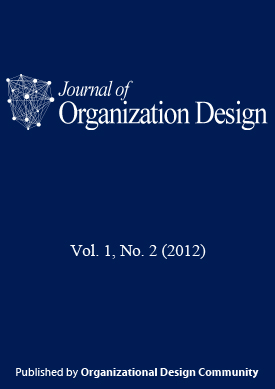The Virtual Design Team: Designing Project Organizations as Engineers Design Bridges
DOI:
https://doi.org/10.7146/jod.6345Keywords:
Virtual design team, designing project organizations, organization designAbstract
This paper reports on a 20-year program of research intended to advance the theory and practice of organization design for projects from its current status as an art practiced by a handful of consultants worldwide, based on their intuition and tacit knowledge, to: (1) an “organizational engineering” craft, practiced by a new generation of organizational designers; and (2) an attractive and complementary platform for new modes of “virtual synthetic organization theory research.” The paper begins with a real-life scenario that provided the motivation for developing the Virtual Design Team (VDT), an agent-based project organizational simulation tool to help managers design the work processes and organization of project teams engaged in large, semi-routine but complex and fast-paced projects. The paper sets out the underlying philosophy, representation, reasoning, and validation of VDT, and it concludes with suggestions for future research on computational modeling for organization design to extend the frontiers of organizational micro-contingency theory and expand the range of applicability and usefulness of design tools for project organizations and supply-chain networks based on this theory.
Published
How to Cite
Issue
Section
License
JOD requires that at least one author of each accepted paper sign a Copyright Transfer Agreement form. Copyright will be transferred to Organizational Design Community when the paper has been accepted.
Articles published in JOD are licensed under a Creative Commons Attribution-NonCommercial-NoDerivs 4.0 Unported License.



